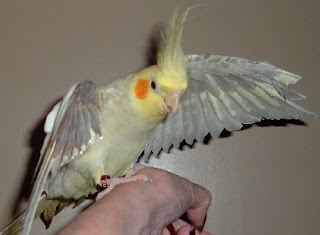
Instructions
Look at the cockatiel's face. Males have brighter colors on their cheeks and faces than females do. The female's face has a washed-out look to it.
Check the tail feathers. Females have yellow and white barred markings on the underside, while males have solid colors.
Spread the cockatiel's wings and look at the underside of the wing feathers. If you see white dots, it's a female.
- Listen for singing. Only the males sing. If you're wondering if the cockatiel is a male, separate it from the flock. Males will start singing in about a week.
Talk to your veterinarian about surgical sexing. This method requires surgery, where the vet opens up the bird and examines the sex organs. Surgical sexing is rarely used, unless the bird needs an operation for another reason.
Tips & Warnings
Consider DNA sexing. There are many genetics labs that offer this service, and it is not expensive. You mail the sample to the lab, and the lab contacts you with the results.
Source: ehow
Author: Mandy Slake

Post a Comment